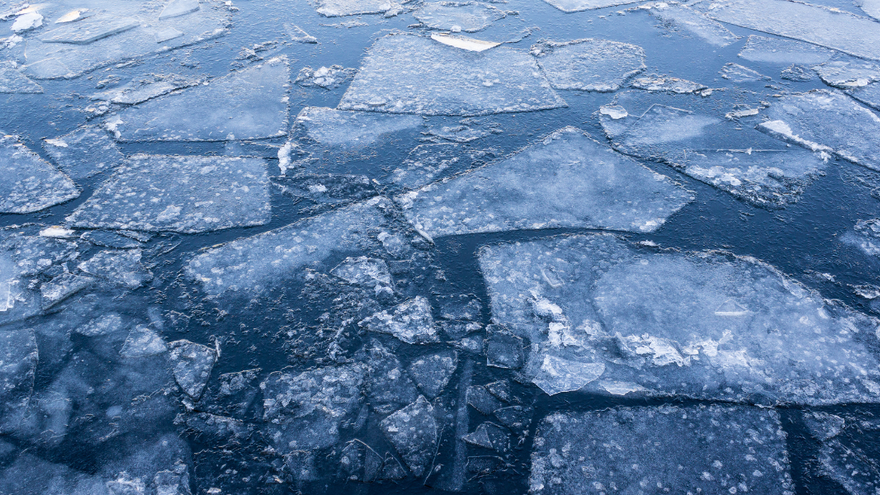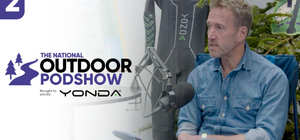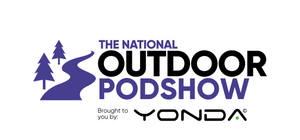6 March, 2023
Beneath Finland’s frozen lakes is a dark, still, ice-cold world that would terrify most people if they ever came into contact with its treacherous conditions. But for Finnish free diver Johanna Nordblad, the icy seclusion found beneath the frozen surface is a porthole to a tranquil and safe space that is unbeknownst to most.

is a stunning Netflix documentary that follows the journey of Johanna and her photographer sister Elina as they pursue a formidable goal - to see how far Johanna can dive the longest distance under freezing water in one single breath.
With her adventurous spirit, daring nature, and loyal support of Elina, Johanna is determined to tear down female stereotypes and attempt to break the current world record for both men and women.
We were excited to speak to the sisters about this inspiring film and discover the passion and training behind making the unthinkable possible.
In March 2021, you completed an incredible ice freediving world record - more than doubling your previous record of 50 metres to 103 metres. How did you first get into freediving and how did it develop into ice diving?
Johanna: I was in scuba diving school and it was Elina’s ex husband who said there was something called freediving and I tried it. Immediately I was like, ‘Aw ok this is like diving!’
We had the first freediving training club in Finland and there were only a few people in it, so we went straight to the World Championships and I was in the team.
I went to the cold (water) because I broke my leg in a downhill bike accident and to handle the pain, I used cold water to help. Then little by little, I went further and further down.
But the cold water wasn’t there at the beginning at all.
What is it about the stillness that you experience when you’re under the water in the ice hole that you enjoy?
Johanna: Under the ice, it’s so empty and different. I think the cold makes it very meditative because your body slows down more.
When the light comes through the ice, it’s super beautiful and it’s like everything stops immediately. It’s something my brain can’t understand, like a different world.
Feeling nervous during these dives can be incredibly dangerous, causing excruciating pain and the inability to focus. What do you do to ensure this doesn’t happen?
Johanna: It’s part mental and it is about the relaxation and the breathing before you go in.
Things like CO2 levels go up and blood vessels get bigger so you don’t feel the pain, then it feels warm. But if you are nervous, it doesn’t work properly.
So if you are not relaxed you will get that ‘AH! It’s cold!’ pain.
Elina: Of course, if you’ve never been in cold water, it hurts. So she has to get used to the cold little by little. So if she wanted to swim longer periods in a swimsuit next winter, she would need to start training now.
In the film, you talk about the impact of COVID and explain how you went from feeling confident in your first attempt to not as ready when the second opportunity came around. What did training look like for you in the lead-up to the record?
Johanna: Everything was different. The first year I was training and the second year I wasn’t.
The pools were closed. And the rules kept changing. It was mentally hard to find the reason why I should do it - it takes half of my work time to train.
It’s a tricky sport to train because there are so many things that affect diving so it’s impossible to repeat. In training, I never do the maximum dives, so I have no idea how much further I can go. Then I do that actual record dive or do the competition to see.
So I was very proud I did it. I’m not so proud of the record, but I went there and tried my best.
On the day of the record attempt, you had a specialised camera crew with you in the water. Did this create additional pressure?
Johanna: Beforehand yes. But for the actual record attempt, it doesn’t matter as I am just focussing on myself.
Elina: On the actual record day it doesn’t matter because Johanna is just concentrating on the dive. But we know they just keep filming whatever happens, so there’s that pressure. But also, a little bit of pressure that you have to do the dive first of all and do the best you can on a competition day because there are other people too who are there just because of this dive - and pressure for Johanna that she can’t just do 2 metres and come up. She has to do the best dive she can on that day.
So in that period just before you’re going in the water, what is going through your head during the countdown?
Johanna: So I am concentrating on myself. Just before I go, I have to think about how I feel and how nervous I am to work out how many breaths I take.
I have to know exactly how I breathe before because the cold and diving reflex slows me down. So I have to know how many times I breathe because I have to delay my diving reflex. I have to breathe a little bit more than normal and hyperventilate a little bit to push the diving reflex forward.
But if I am nervous and breathe too much then I can’t dive so far.
Elina: Because everything is so well planned, she doesn’t have to think about anything else than the dive itself. The diving track is safe and checked. Before the dive, I’m there helping her to put on the swimsuit and get ready.
With dryrobe®, it's a big part of the concentration part! It’s very well planned where I’m standing with it, with the wind. And she does her last breathing under it. So it’s been really good for that.
We have a very clear routine on what to do. And then it’s just go. She always promises she will come up if it feels really bad.
How did you feel when you came up at the 103 metre mark?
Johanna: Happy because I wasn’t prepared and wasn’t training as much as I would have liked to!
I couldn’t speculate how far I could go because the prep wasn’t so good, so my plan was, whatever happens, I will dive 60 metres. And when I get there, think ‘Can I go to the next hole?’
At 80m I was thinking, ‘I know I can do 10 metres more.’ At 93m, I was like ‘This is the usually the place I would come up’…And then I thought ‘I am not coming here tomorrow!’
Elina: The moment that we were walking to the ice and to the first hole, it was like, ‘We made it.’ It doesn't matter what she does, it’s a lot of pressure to do a comp dive. One of the most difficult things regarding this dive was the year leading up to it, so the fact that we were actually there and the film crew was there meant that this dive was now a reality and we were happy about that.
After all those holes after the 60m mark, I was there waiting like, ‘Is she coming up now or is she going to the next one?’ And of course, when she went past 93, then I knew, ‘Oh my god she is going to the last one.’
When she came up and I saw her take her first breath, I knew she was fine. And when she starts laughing I know she is definitely fine - but even the judge said that the laugh took a little bit longer to start than usual!
How important was it to complete this achievement together?
Johanna: It was like, why should I do it alone?
Elina was living in New Zealand for years, then Australia. And then she moved to Finland and I was like, ‘Yes, now we have time to do something together.'
But I have to work and she has to work. And then we decided we have to work together.
Elina: In 2013, she was going to the World Champions in Serbia. And I was in Portugal and she rang me and was like, ‘I’m not going if you’re not coming because I need you there as my photographer!’
She had already been competing for 13 years so wanted to bring something more fun into it than just competing.
She’s good in competitions, but she's not like ‘I want to make a record, I want to be the best in the world.’ She has that side but she wants to see what’s possible.
Elina, what did it mean to you to follow your sister’s journey through photography?
Elina: It’s a nice thing. It’s nice for me of course to be in the water with my camera but it's also sort of part of her training - but it makes it fun as it’s not easy for her to be in the cold water to model for me!
As a photographer, it brings a new dimension to the whole thing. Of course, I love water and have been a photographer for 15 years. To add the water element into my pictures, it’s also a fun thing for me and is a motivation for my work. We can do whatever we want and it is fun.
Elina, At the end of the film, you say ‘Now you never have to dive again. That was the last one.’ Do you think it will be the last one?
Elina: The record itself is not a goal and this project was so hard for 3 years.
And so many times, she says ‘Why am I doing this? I don't want to do this. I can't do this.’ and she is crying. To see and live through all that and to see her do it, it was like, you never have to go through this again. Unless she wants to of course!
We don’t have to do a documentary about any records, it can be about something else instead. Just fun diving for her.
Johanna: It has given us so much. The pictures they took and the documentary are very beautiful. Someone captured the water as I see it.
Elina: We are thanking Ian Derry and Archer’s Mark so much that they walked this journey together with us. Means a lot to us!
You can watch the short film documentary on Netlfix.
Get changed and stay warm with dryrobe®, the world’s warmest and most versatile change robe. Designed to let you get changed anywhere, the weatherproof outer protects you from elements, whilst the super-warm lining helps you dry quickly. Perfect for all outdoor activities, from elite sporting events to family camping adventures.
Most recent articles by Outside & Active

Brooks supports trail runners to defy limits and empower their trail runs with the new Cascadia 18. The adaptable Cascadia combines DNA Loft v2 cushioning with TrailTack Green grip and a durable upper mesh to handle all terrains, providing necessary comfort and underfoot security on each surface.

Connectivity makes eBiking more customised, convenient and secure.

Various app solutions, interfaces and services as the next step for the eBike experience of tomorrow
Most recent articles in WATER
Wild swimming is a popular pastime but it can be tricky to know where to start gaining the knowledge and confidence to begin.

Did you miss out on attending this year's National Outdoor Expo? Or simply feeling the blues from the show and want even more EXCLUSIVE content? The National Outdoor PodShow is the one-stop-shop for those who love the outdoors.

National Outdoor PodShow sponsors YONDA are giving you the opportunity to win the ultimate swimmers bundle. Enter now!